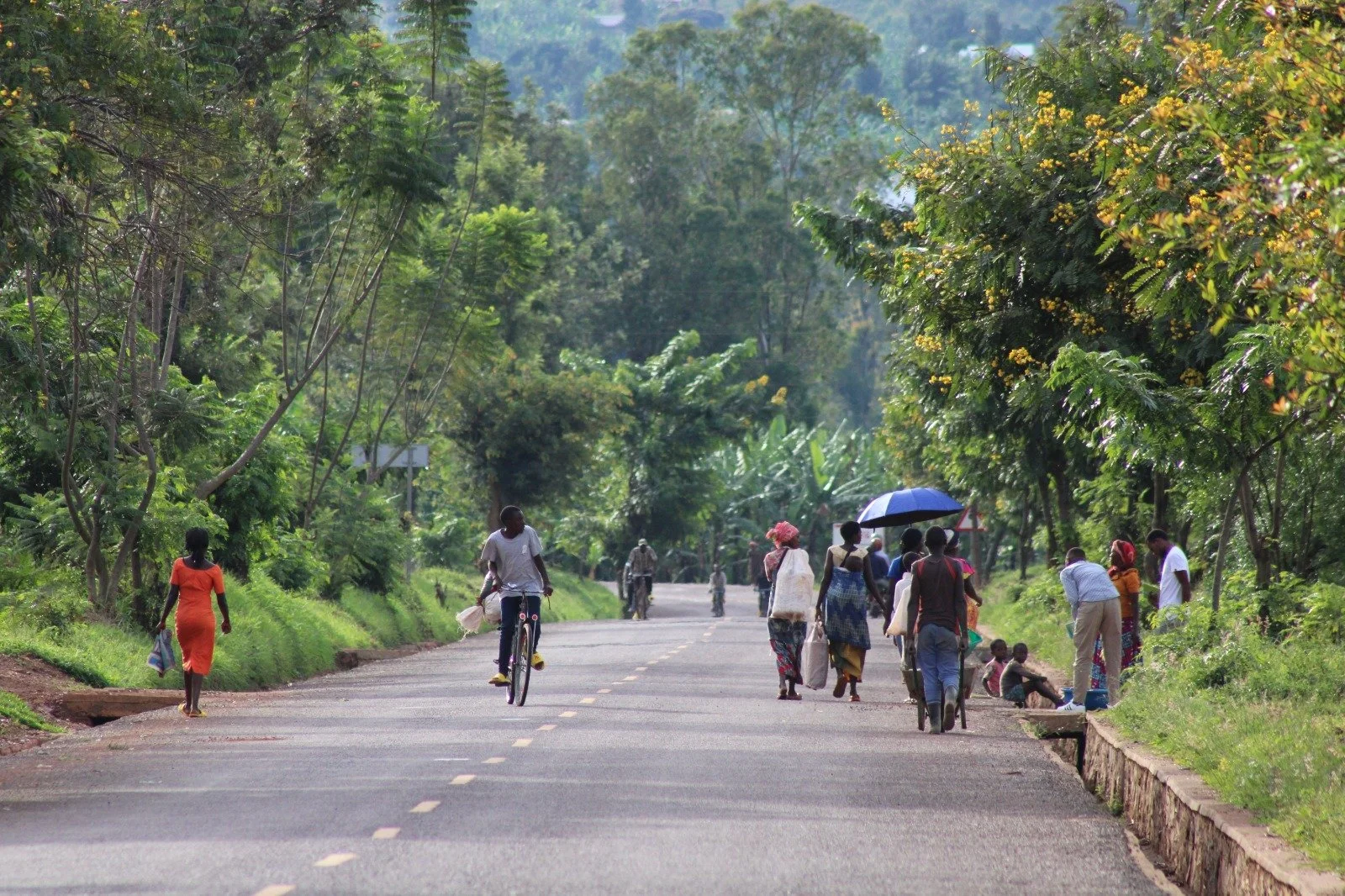In Rwanda, there is a commonly used phrase: “buhoro, buhoro,” meaning “slow by slow.” I often use it when I try out my limited Kinyarwanda knowledge and people ask me if I can speak the language (“I’m learning slowly”), or when I am on the back of a moto-taxi and I hear an engine about to rev up (“slow down”). But here, “buhoro, buhoro” is also a way of life.
Working in Rwanda, it feels that there are periods of utter chaos, and in between those moments, there are periods of extreme calm and slowness. The past two months have been defined by this cycle. At times, it can be frustrating, but at the same time, it has taught me to navigate the through space and find balance in each of these moments.
In March, Shooting Touch held two of our biggest events of the year, and also hosted our largest group of visitors from the US - around 20 high school students from Noble & Greenough School in Boston and several members of our Shooting Touch Boston staff. The week of their visit was by all means a success: March 18th was a beautiful day in Nyamirama, Rwanda, and it was a perfect representation of Shooting Touch, a blend of community, sports, and health mobilization. It was a celebration of International Women’s Day (IWD), which consisted of a 5K march, a basketball tournament with each of our four villages in the East sending teams to represent each of our age groups, and health testing. Pictures cannot begin to do the event justice, but they are much more effective than my writing could ever be. The event was a resounding success (500+ community members tested for HIV and other STIs, as well as non-communicable diseases), and full of memorable moments.
My personal favorite moment was when the Rwinkwavu women’s team won the IWD championship game, while a group of Rwinkwavu women on the sidelines beat on their drums with increasing excitement until an absolute eruption at the final whistle. Fans that had been bussed from Rwinkwavu flooded onto the court to celebrate as the drumming continued. I could spend this entire blog post sharing memories like that. In that moment, I forgot about the chaos that had ensued the day prior to the event.
The whole week leading up to IWD was rainy, and when it is rainy in Rwanda it is difficult to get anything done. Electricity becomes touch and go, motos stop running and transportation becomes difficult. The day before IWD was no different, and there were still some finishing touches to be done – one of which included getting white sheets and paints for each of the four courts. This on paper seemed like an easy task, however, it ended up being excruciatingly painful. I went to several stores looking for someone who sold water-based paint and then finally called my landlord and asked him for guidance (he thankfully works in construction). He sent one of his employees to be my guide for the day, and I put in an order for the colors of the Rwandan flag to be mixed fresh. I thought this would maybe take an hour or so, but of course it ended up taking several.
In the meantime, between periods of heavy rain, we set out to find white sheets that we could paint on. This was even more difficult. We ducked into several different stores and even walked through the large market that happens twice a week on our quest, ultimately to no avail. Right when my frustration really began to hit, I got a phone call from Nate, who was in a town approximately 30 minutes down the road. He had found white sheets and would send them by moto. What I had thought would be a small quest, ultimately took almost a full day to complete, and this was not the end. Just as I had delivered all of the materials to the courts in Kayonza district, the rain began again. This moment was dark for me – I had spent hours running around town for a task that would have taken from start to finish an hour, at most, back home in the US – and I thought that with the rain, there was no way that the sheets would even be painted in time for the event. However, in the morning, somehow each of the courts arrived proudly carrying their painted banners. This was just a small part of a big day, but somehow it was also the hardest task that I had to accomplish before the event. It turned out to be my most chaotic event, but with the help and commitment of the people around me, this small detail turned out to produce something amazing and beautiful.
After we wrapped up IWD and some service projects with the students from Nobles, time seemed to halt. There was still work for Shooting Touch that I continued to chip away at, but there was much less time spent on calls and meeting with the team. In this absence of social interaction and new availability in time, I felt that I was finally able to really explore and connect with people in my community.
I live in Kayonza center (a town called Mukarange), which is in a much more urban setting than the rest of our courts in Kayonza District. During my walks to market and the court, I often stayed on the main strip of road and what I have self-defined as the “town center.” However, with more time in April came more walks and more runs, and I was able to discover the oasis of banana plantations and beautiful greenery that is tucked right behind my house. In this quiet and calm space, time does not only slow down, it seems to halt, and I am left alone with my thoughts and the quiet sounds of the birds. This time has become restorative for me, and when I am in the chaos of work or travel, I seek to emulate the internal peace that comes from being immersed in greenery, with the constant chirping of the birds.
This quiet time also allowed me to become closer with people in my community. While the language barrier still makes it difficult to connect at times, I now practice my Kinyarwanda often at a local coffee stand, with the different baristas and the many attendants who work in the surrounding stores. This coffee stand has shifted from a place to seek out coffee into a place of language exchange and community for me.
When I am not receiving my Kinyarwanda lessons at the coffee stand, I am practicing with the family that runs a small storefront less than 50 meters from the gate to house. I sit in the store as both husband and wife teach me words and phrases in Kinyarwanda with patience and grace as I repeatedly butcher the pronunciation. Now, if I am passing by the store, either in the morning or on the way out, I always make sure to drop in and say hello to my neighbors.
The slowness of April also gave me a chance to explore more of East Africa, with trip to both Uganda and Kenya. April is the low season for tourism in this part of the world due to the frequent rain, so even though there was some chaos in these travels, each destination was mostly a continuation of the calm in Rwanda. In Uganda, we traveled to Lake Bunyonyi, which during the high season is packed with tourists from all over the world, but in low season, it seemed that we had the whole lake to ourselves. One night, we stayed on one of the many small islands scattered throughout the lake, and we were completely alone. In exploring the island and swimming in the water, I was again immersed in a restorative calmness.
In Kenya, I traveled to the coast and spent most of my time in a small beach town south of the major port city, Mombasa. It rained almost every morning, which again provided time and space to be alone with my thoughts in the still, warm coastal climate. The beach, which I have been told becomes filled with people from all over during in the high season, was almost completely empty in the afternoons when the rain cleared.
As someone who has always struggled with the slow – I am one of those people whose leg starts incessantly tapping if I have to sit in the same place for more than ten minutes – navigating these quiet and still spaces has been extremely difficult for me, but it has also taught me how to be alone with myself. It has taught me to appreciate the chaos and how to navigate strategically to find moments of calm in chaos, and moments of chaos in calm.















